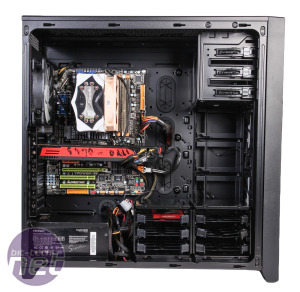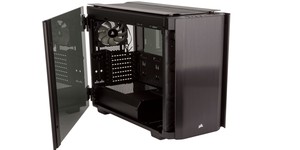
Performance Analysis
With such a cavernous interior and two beefy 140mm fans up front, the Obsidian 750D managed a very respectable CPU delta T of 49°C, placing it amongst the top third of our extensive results graph. This put it pretty much on par with the NZXT Phantom 820 and NZXT Phantom 630, although it was 7°C off the pace of the best-performing case on test - SilverStone's Raven RV04.The GPU delta T was also a result Corsair can be proud of - at 47°C, this was enough to eclipse the NZXT Phantom 820 and NZXT H630 and was only 2°C warmer than the top-scoring SilverStone FT02R-W. There's no fan control on the Obsidian 750D, but most people won't find the need to adjust its fans as they're quiet enough to mean you'll need to invest in high-end water-cooling for the rest of your system not to drown them out.
Click to enlarge
Conclusion
With a sensible bordering on attractive price tag, Corsair's new Obsidian case is a pleasant rather than fantastic addition to it's line-up. There's little to dislike, but equally not a whole deal to get excited about either. You might also call it bland-looking but each to his own here - for the minimalist no-fussers out there it's probably in our top three recommendations. Cooling-wise again its good but not incredible and as many similar cases offer nowadays there's good water-cooling support, although we do give the Obsidian 750D a few extra brownie points here for the fact you can use dual and triple-fan radiators at the same time without modding - something that's very rare in a sub £150 case.
Stepping back and gathering these qualities together, though, and you're suddenly aware that every box has been ticked and you're looking at receiving a fair amount of change from £150. In this light, we simply can't ignore that the Obsidian 750D is a great premium case for the money, albeit a safe option that's perhaps lacking the edgy demeanour of the Carbide Air 540 in terms of looks and uniqueness.

-
Cooling21 / 30
-
Features17 / 20
-
Design27 / 30
-
Value17 / 20


MSI MPG Velox 100R Chassis Review
October 14 2021 | 15:04










Want to comment? Please log in.